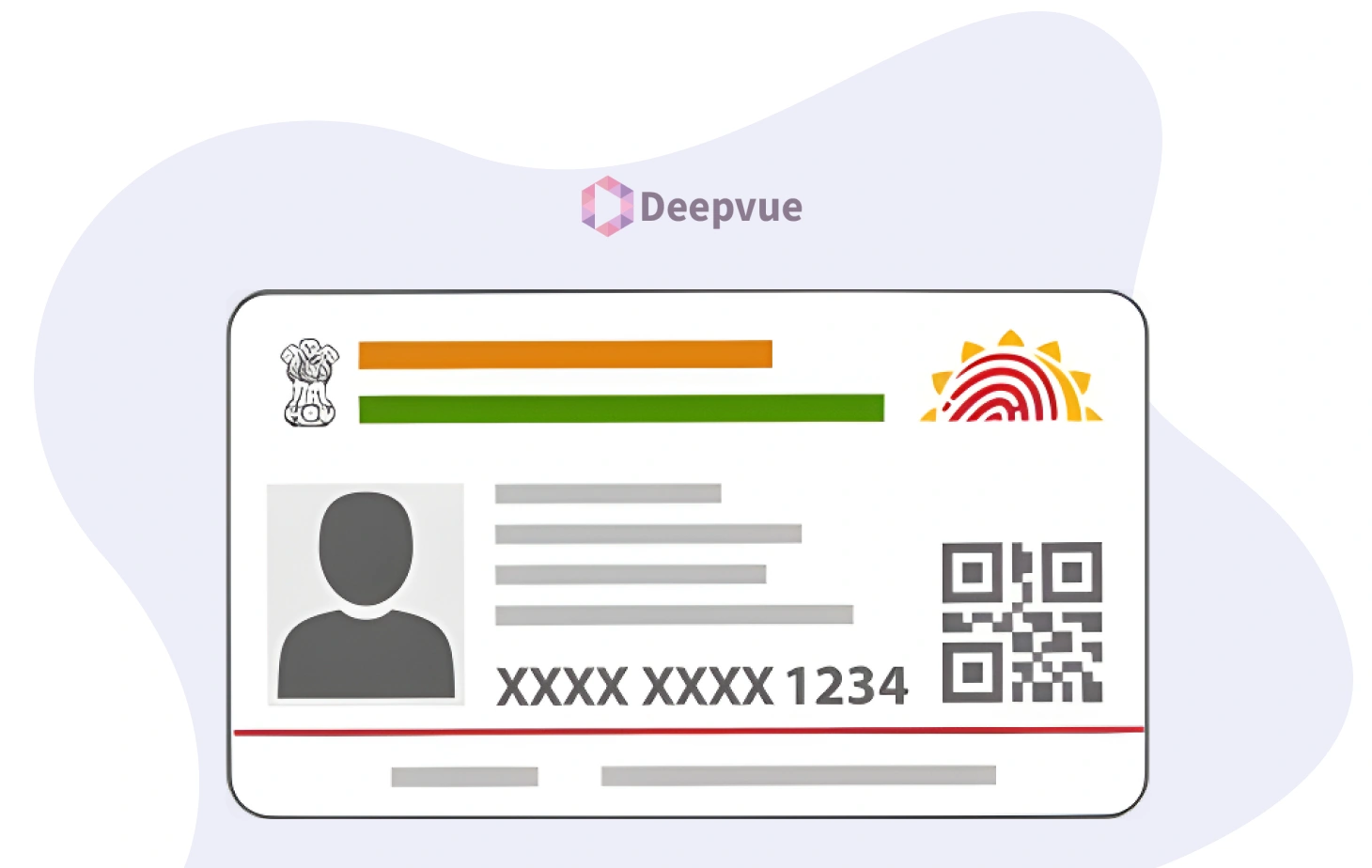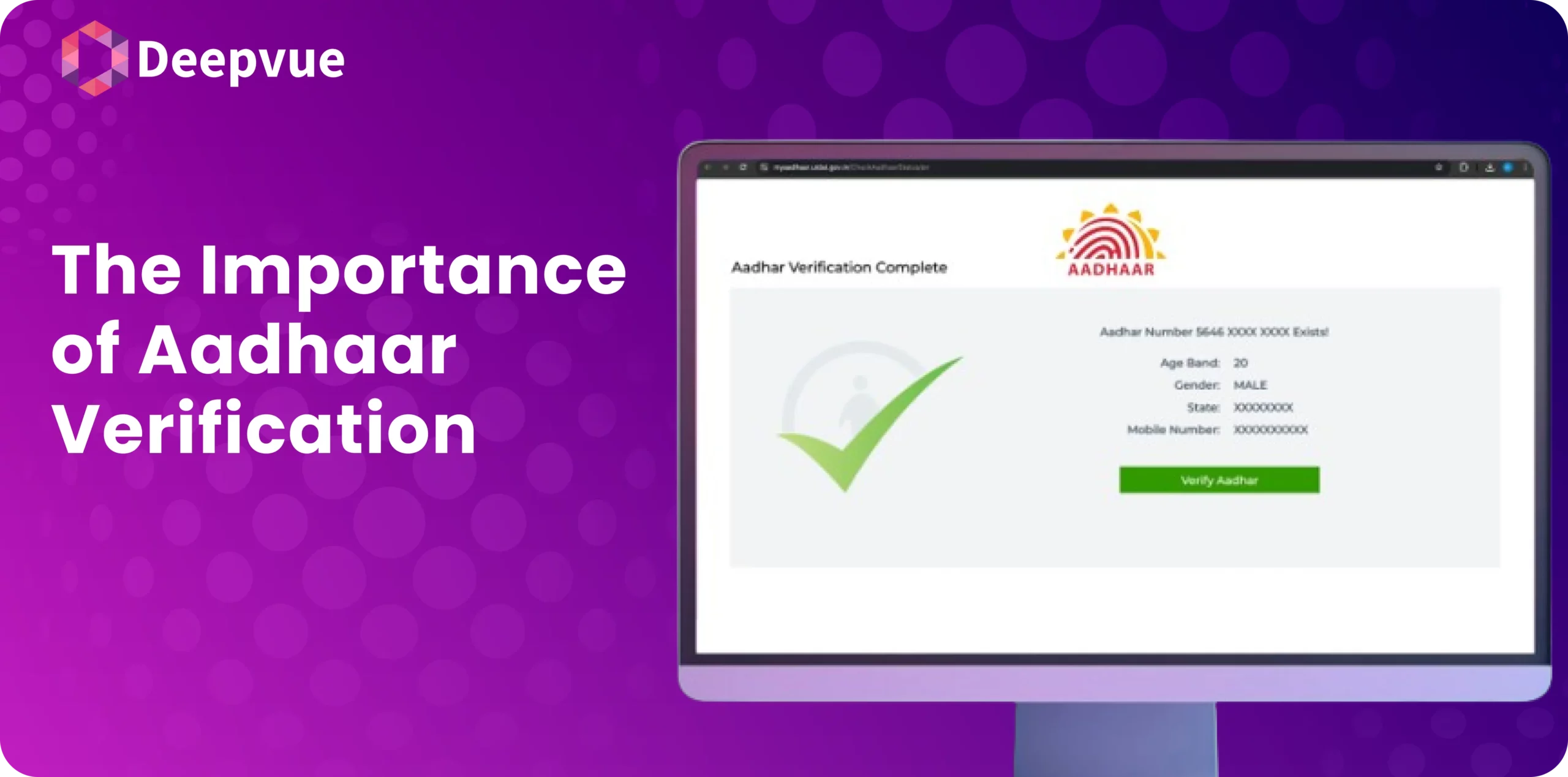Convenience is one benefit of the digital transition, but protecting personal data is much more important. Sensitive information abuse is becoming more likely due to the growing dependence on Internet services, especially in industries like banking, healthcare, and government to avoid fines and guarantee the security of client information.
In India, Aadhaar, the world’s largest biometric identification system, has streamlined access to essential services, but it has also raised concerns about data privacy and identity theft. To address these concerns, Aadhaar masking has emerged as a key solution, offering a way to secure personal data while maintaining the convenience Aadhaar provides.
This blog explores how Aadhaar masking protects customer data and helps prevent identity theft, making it an essential tool for businesses and individuals.
What is Aadhaar Masking?

The security feature known as Aadhaar masking keeps critical personal data hidden from those who have an Aadhaar number. Indian citizens are provided with a unique 12-digit identity number referred to as the Aadhaar number. The Aadhaar number issued by the UIDAI presents an individual with a unique digital identification, thus making them eligible to benefit from various banking and welfare schemes run by governments.
Aadhaar masking involves masking the first eight digits of an Aadhaar number and showing the last four numbers. So, in a masked Aadhaar number, you may see something like “XXXXXXXX1234.” Hence, it would hide the most sensitive part of an Aadhaar number and identity theft cannot take place to a large extent.
How Does Aadhaar Masking Work?
Aadhaar masking is a simple process through which a business or service provider uses special tools or APIs to produce a masked Aadhaar number. These tools automatically mask the first eight digits and keep the last four digits for identity purposes. Businesses can easily incorporate Aadhaar masking into the digital processes to secure data.
Legal and Regulatory Requirements
In India, using Aadhaar masking is not just advised but mandated by legislation. The Unique Identification Authority of India (UIDAI), which oversees Aadhaar, released regulations requiring Aadhaar numbers to be concealed when used for KYC or verification services. These guidelines are part of a broader framework aimed at preventing misuse of personal information and protecting citizens’ privacy.
How Does Aadhaar Masking Prevent Identity Theft?
The use of someone’s identifying information without their authorization is commonly referred to as identity theft. Using an Aadhaar number may imply such identification theft in the context of Aadhaar for impersonation or unauthorized access to services. Aadhaar masking has a highly significant role in identity theft prevention for many reasons.
- Limited Data Exposure: When masked Aadhaar numbers are used by a company or individual, the sensitive parts of the identification number are masked. Thus, there is less probability that the entire number will fall into some unauthorized parties during transactions or verifications.
- Mitigation of Data Breaches: Aadhaar masking ensures that in cases where businesses experience data breaches, even when the Aadhaar numbers end up in the breached data, only a subset of information is available to these attackers.
Example of Aadhaar Masking’s Impact
Suppose the telecom business wants to onboard its customers by Aadhaar-based verification. While keeping the Aadhaar number unrevealed, in case of a data breach, millions of full Aadhaar numbers would have been revealed, thus putting millions at risk of identity theft on a large scale. The final four digits of the number would be the only information that would be taken if Aadhaar masking had been used, rendering it meaningless for attackers.
Aadhaar Masking’s Advantages for Businesses
- Enhanced Security for Customer Information: Aadhaar masking can be implemented to enhance security over sensitive information that concerns customers. Enhanced security will ensure that a firm is protected from any data breach and unauthorized access.
- Reduced Liability and Compliance Risk: Data breaches can result in significant legal penalties and financial losses to the concerned organizations. With the use of Aadhaar masking, the entities can show that they have complied with the rules of customer data protection of aadhaar.
Best Practices for Implementing Aadhaar Masking
- Integration with Other Systems: Integrating with the organization’s existing systems, would require a technical partner engagement. An example might be APIs that automatically mask Aadhaar numbers during a transaction.
- Employee Training: Businesses should educate the staff on why and how to mask Aadhaar and where to apply it. A good understanding of customer data protection of aadhaar reduces misusing personal details.
- Audits and Updates Regularly: Proper safeguards should be reviewed from time to time, and the system should be kept updated. This is to check compliance with new regulations and changes in threats that may have emerged.
Limitations and Difficulties with Aadhaar Masking
Aadhaar masking is a useful feature in terms of data security for consumers, though it is not all rainbows and unicorns. Companies may face the following limitations:
- Implementation Costs: For smaller organizations, the cost of implementing such Aadhaar masking tools or APIs sometimes proves too expensive. However, the long-term benefits of enhanced security and compliance far outweigh these initial costs.
- Complex in System Integration: Since companies have legacy systems, such an integration would require resources and expertise. APIs and tools have been developed that are more modern and make complexity look less when moved in the direction of integration with an Aadhaar masking tool.
- Limited Data Visibility: Sometimes there might be an issue when verification requires the whole set of Aadhaar information. To do so, the whole Aadhaar number must be accessed with the appropriate authority.
The Last Word: Mask It, Don’t Risk It
With Aadhaar masking, most risks associated with identity theft and data leaks involving customer information are eliminated. They will reduce risks to that level where the risk of a data breach is not only averted but the legal requirements are also met while shielding their sensitive information.
All business firms dealing with Aadhaar data should implement Aadhaar masking as their first step. It enhances security and above all, it helps establish trust with customers and aids in regulatory compliance from India’s data protection perspective.
By masking the first eight digits of an Aadhaar number, Deepvue’s Aadhaar Masking API ensures more secure data and reduces the chance of identity theft. Conforming with UIDAI regulations, helps a business be certain about the respect of customers’ sensitive information.
FAQ:
Why is Aadhaar masking important?
Aadhaar masking reduces the chances of illegal access to individual data and the consequent cases of identity theft while applying for or processing any digital transaction.
How does Aadhaar masking help prevent identity theft?
By obscuring the major portion of the Aadhaar number, most of the Aadhaar number is kept out of the unauthorized’s eyes, thus reducing its chances of misuse.
Is Aadhaar masking applicable to all transactions?
Yes, with Aadhaar masking, digital KYC processes, financial transactions, and any Aadhaar-based verification get covered.
What are the advantages for businesses when it comes to Aadhaar masking?
Aadhaar masking protects data, ensures regulatory compliance, increases trust among customers, and reduces the possibility of regulatory action that might include financial penalties.
What challenges might businesses face with Aadhaar masking?
Initial implementation costs and integrating masking into legacy systems can be challenging, but the long-term security benefits outweigh these obstacles.






